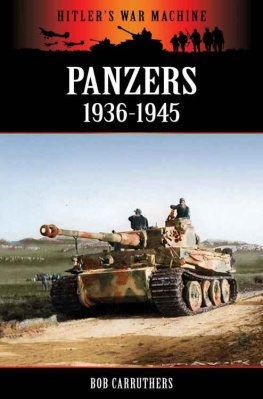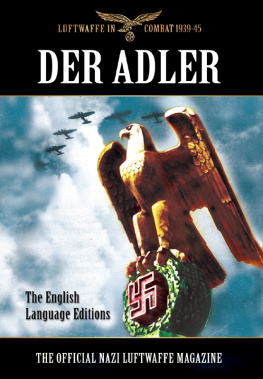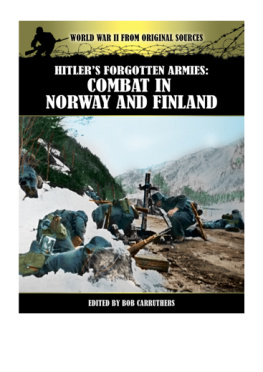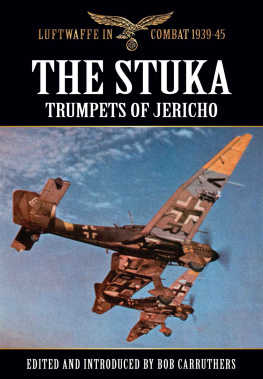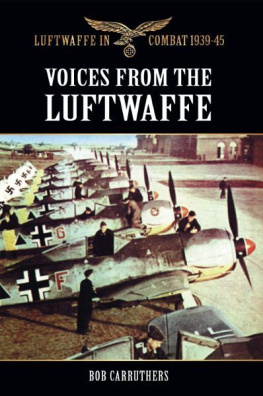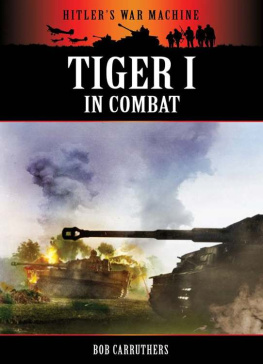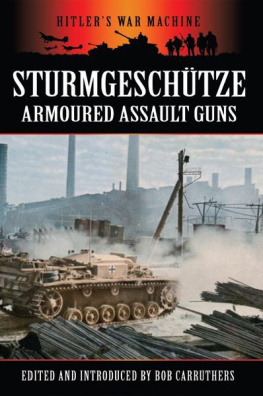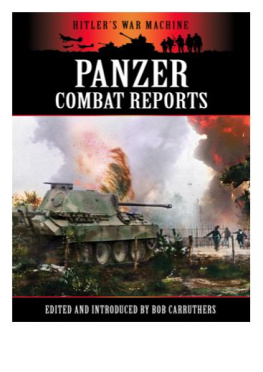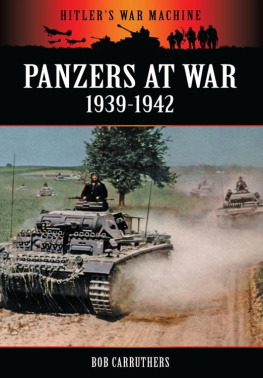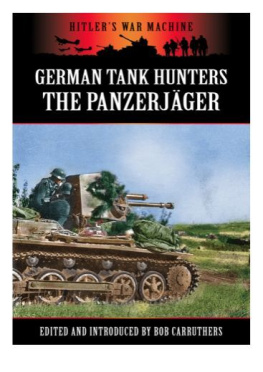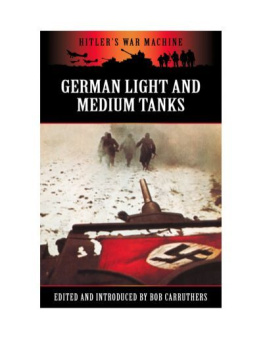

This book is published in Great Britain in 2013 by
Coda Books Ltd, Office Suite 2, Shrieves Walk, Sheep Street,
Stratford upon Avon, Warwickshire CV37 6GJ.
www.codabooks.com
Copyright 2013 Coda Books Ltd
ISBN 978-1-78158-315-9
A CIP catalogue record for this book is available from the British Library.
All rights reserved. No part of this publication may be reproduced or transmitted in any form or by any means (electronic or mechanical, including photocopy, recording, or any information storage and retrieval system, without the prior permission in writing from the publisher.

Contents
INTRODUCTION
T his book is the compendium edition featuring complete reprints of five of the titles from the series entitled Hitlers War Machine. The aim of the series is to provide the reader with a varied range of materials drawn from original writings covering the strategic, operational and tactical aspects of the weapons and battles of Hitlers war. The concept behind the series is to provide the well-read and knowledgeable reader with an interesting compilation of related primary sources combined with the best of what is in the public domain to build a picture of a particular aspect of that titanic struggle.
I am pleased to report that the series has been well received and it is a pleasure to be able to bring original primary sources to the attention of an interested readership. I particularly enjoy discovering new primary sources, and I am pleased to be able to present them unadorned and unvarnished to a sophisticated audience. The primary sources such as Die Wehrmacht and Signal, speak for themselves and the readership I strive to serve is the increasingly well informed community of reader/historians which needs no editorial lead and can draw its own conclusions. I am well aware that our community is constantly striving to discover new nuggets of information, and I trust that with this volume I have managed to stimulate fresh enthusiasm and that at least some of these facts and articles will be new to you and will provoke readers to research further down these lines of investigation, and perhaps cause established views to be challenged once more. I am aware at all times in compiling these materials that our relentless pursuit of more and better historical information is at the core our common passion. I trust that this selection will contribute to that search and will help all of us to better comprehend and understand the bewildering events of the last century.

A Panzer I in action during the Spanish Civil War
In order to produce an interesting compilation giving a flavour of events at the tactical and operational level I have returned once more to the wartime US Intelligence series of pamphlets, which contain an intriguing series of contemporary articles on weapons and tactics. I find this series of pamphlets particularly fascinating as they are written in, what was then, the present tense and, as such, provide us with a sense of what was happening at the face of battle as events unfolded.
The first vehicle to be produced in any numbers for the Panzerwaffe was, of course, the tiny Panzer I, which at the time was known as the MG Panzerwagen. Delivery of 318 of these had been made by August 1935, along with 15 of the Zugfuhrerwagen, which was later to become the Panzer III. One aspect of tank design which the Germans got absolutely right from the very outset was to identify the importance of radio communications. Although initially only the command tanks were fitted with radios that could both transmit and receive, the other vehicles were at last equipped with receiving radio sets, and this was a major advance upon the thinking of many of the countries which would come to oppose Germany. Throughout 1934 exercises continued with the experimental tank units and a number of other valuable lessons quickly became apparent, particularly the need for close co-operation between the air forces and the tanks on the ground. At this point the first serious tank tactics which were to bring so much success during the Second World War began to appear. It was soon obvious that the tanks needed to be employed on a relatively narrow front. A divisional front was estimated at about three kilometres, a great change from the wide fronts of the Great War. It was still obvious to the German High Command that the decisions which were being made, were based on theory, rather than practice. Germany - and indeed every other nation of the time - had no practical experience to draw upon, therefore a number of educated guesses were made.
In January 1936 General Beck reported to the High Command, his findings being based on a study of a French organisation. He was also very critical of the slow rise in production capacity which was hampering the development of the tank force. Interestingly, the debate about which tasks tanks were suitable for, and whether specialist machines had to be developed for each task, was already beginning to take shape. Becks report clearly stated that the three main tasks of the Panzers were supporting infantry, operating in units with other mobile weapons and, finally, combating other tanks. Beck himself was unable to come to a decision about whether a single tank should be developed with the capability to take on each of these purposes or whether a specialist vehicle should he designed for each purpose.
Ultimately the decision was that the light tanks would be used in a scouting role and that an infantry support tank would be developed which was later to come to fruition in the form of the Panzer IV; this decision cast the Panzer III in the role of main battle tank. Amazingly the decision was taken that the 3.7cm gun which initially equipped the Panzer III would be sufficient for the battle conditions. The various types of German tank design were to cater for most eventualities on the battlefield. Initially the Panzer I was considered to be fit for training purposes only, however manufacturing proceeded very slowly and eventually both the Panzer I and II were earmarked for the reconnaissance role. The Panzer III was essentially designed for break-through and anti-tank operations and the Panzer IV was designed to provide close support for the infantry battling their way forward against dug-In positions. Almost from the outset the limitations of the design for the Panzer I were obvious. The armament in the form of two machine guns, was inadequate for most purposes on the battlefield. In addition the very thin armour gave protection only against rifle bullets: almost any battlefield weapon could penetrate the armour. More significant was the fact that the crew was comprised of only two men.
In October 1935 General Liese, head of the Heeres Waffenamt issued a report which gave the limitations of the tanks. He noted that the MG Panzerwagen (Panzer I), although fitted out only with two 7.9mm machine guns, could be adapted to attack armoured cars and other light tanks if it was issued with special S.M.P. steel core ammunition. In the case of the MG Panzer II, it was noted that the muzzle velocity of the 2cm gun could penetrate up to 10mm of armoured plate at a range of up to 700 metres. It was therefore decided that the Panzer II could engage armoured cars with success, and was also fully functional for combat against tanks with approximately the same armour as itself. Liese noted that the tanks most likely to be encountered in large numbers in a war against the French were the light Renault Ml7 and Ml8 tanks, of which there were about three thousand operational in the French forces at the time. It was also thought that the Panzer II would be the equal of the Renault NC37 and NC31 tanks. Against the heavier French tanks, including the Char B, it was noted that the Panzer II was practically worthless. Despite these reservations large-scale delivery of the Panzer II was already in train and was expected to commence from 1st April 1937.

